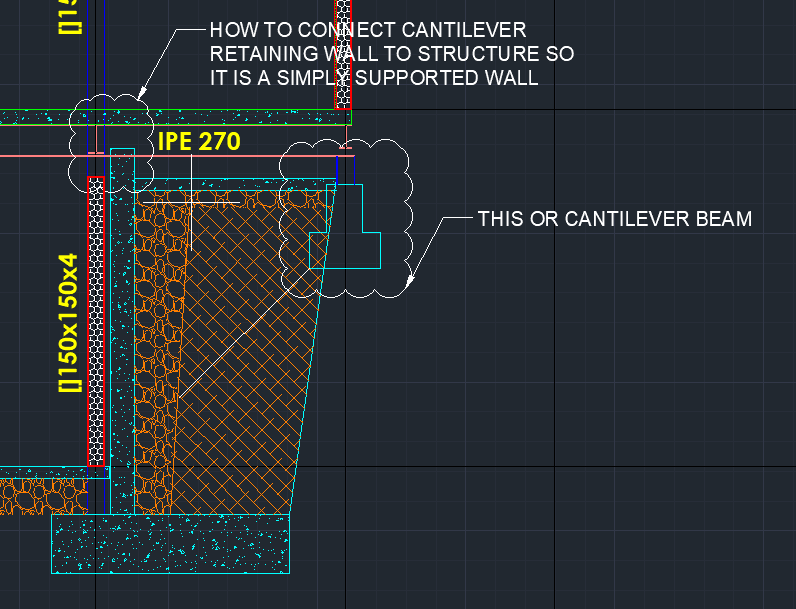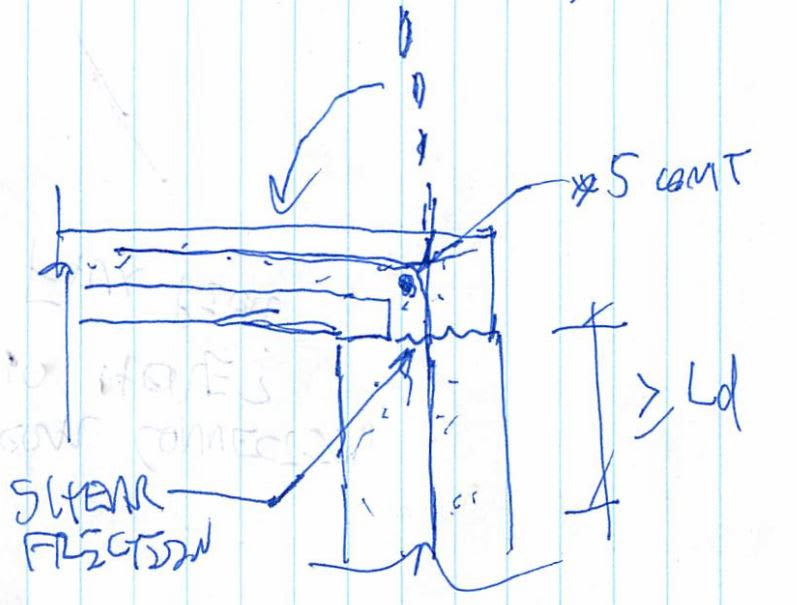octagie
Civil/Environmental
- Feb 20, 2019
- 18
What would be the most appropriate way to connect a cantilever retaining wall to a composite deck slab of the interior steel building, of a semi buried house? So it works as simply supported. The composite deck passes over the wall. Can't find any similar detail anywhere that addresses both structural and envelope concerns, plus constructive. Can you guide me? See attached sketch
Kind Regards.
Kind Regards.


